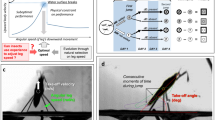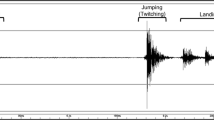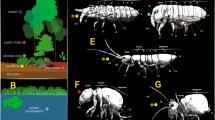Abstract
Water loss, cutaneous resistance, and the effects of dehydration on jumping ability were measured in two neotropical frogs, the common coquí (Eleutherodactylus coqui) and the cave coquí (Eleutherodactylus cooki). In both species jumping performance declined with an increase in water loss and a greater duration of exposure to dehydrating conditions. The arboreal species, E. coqui, had a slightly higher rate of water loss and lower cutaneous resistance than the non-arboreal species, E. cooki. However, differences in cutaneous resistance and water loss were too small to explain differences in geographic distributions of these species. In both species, a decline in boundary layer resistance contributed to an increased rate of water loss at higher temperature.
Similar content being viewed by others
Author information
Authors and Affiliations
Additional information
Accepted: 4 January 1999
Rights and permissions
About this article
Cite this article
Rogowitz, G., Cortés-Rivera, M. & Nieves-Puigdoller, K. Water loss, cutaneous resistance, and effects of dehydration on locomotion of Eleutherodactylus frogs. J Comp Physiol B 169, 179–186 (1999). https://doi.org/10.1007/s003600050209
Issue Date:
DOI: https://doi.org/10.1007/s003600050209




